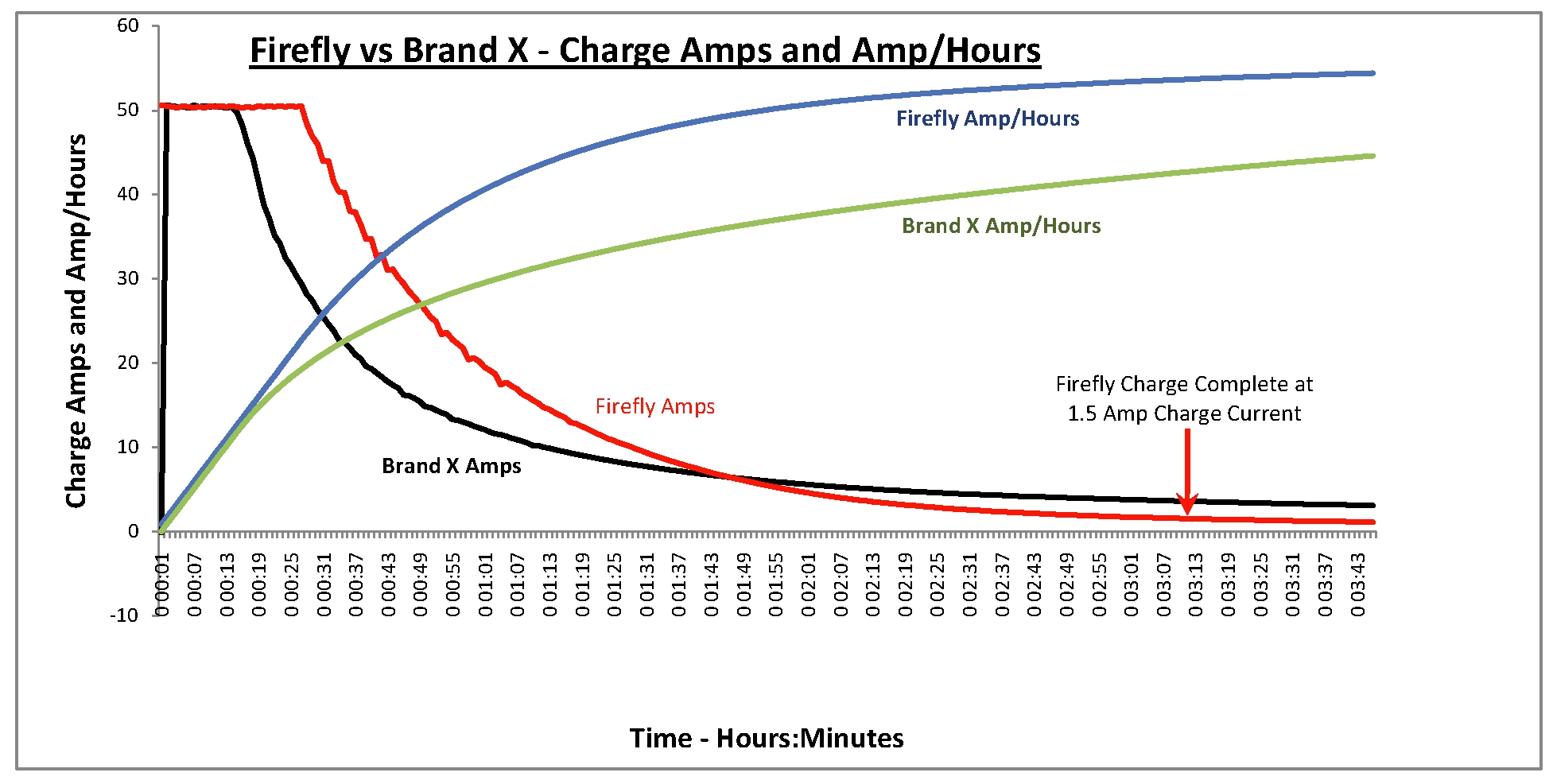Double check the tightness of the wires where they enter and exit your solar controller. Is the weight of the wires hanging off the terminals? Really it would be best to make sure they cannot vibrate and there is NO stress on any wire terminal.
https://www.amazon.com/Ancor-400000...&qid=1485831134&sr=8-11&keywords=cable+clamps
If the wires were hanging and vibrating with the engine, it is possible the solder joints on the circuit board, where the wires enter/exit, could have fractured and give intermittent Readings.
The tighten stranded wire under screws terminals are problematic. They need to be retightened occassionally, especially withing the first week of originally crushing the wire under the screw. This copper can oxidize and develop more resistance with time, and then heat up more, accelerating the degradation process
Strange that they did not give a recommended load at which to discharge the battery to 10.5v.
As a minimum, I figure one needs to use the load at which the battery the battery earns its 20 hour capacity rating.
So 110AH rating divided by 20 hours is a 5.5 amp load. So, if one wanted to keep the battery around 77f, and could discharge it at exaxtly 5.5 amps One could judge the remaining capacity by hol long it took voltage to hit 10.5volts.
It is not easy to have an exact 5.5 amp load the whole test when voltage drops as battery discharges, nor keep the battery at 77f for the whole test for the results to be precise and accurate.
BUt, at a later date, one could do the same test using the same load and compare the time it took to fall to 10.5v and judge fairly closely to how much capacity has declined and can estimate how much is remaining.
Also when recharging from this 10.5v, it should be done in one session, not getting to 50% day one then 98% day two and 100% day 3.
Ask your contact about minimum/maximum initial amperage.
But this chart shows a 50 amp initial current on one battery, so we know it is capable of accepting that much.
Odyssey AGM says use 40% of the 10 hour rate of the battery as a minimum when conditioning.
http://www.odysseybattery.com/documents/ODYSSEY_Battery_Reconditioning_Charge_Procedure.pdf
Odyssey's group31(pc2250) is 100AH at 20Hr rate, and 92AH at the 10 hour rate.
That would be 38.6 amps Minimum recommended. This 39 amps might take nearly 2 hours before battery voltage climbs to 14.7v. Then 14.7 needs to be held until amps taper to near Zero. This might take 4 hours if the battery is healthy. It might take 18 hours.
I would not recommend trying an AGM 'reconditioning' procedure, unless one is willing to apply a big enough load to battery to take battery voltage to 10.5 in an hour or 3, but certainly no more than 20 hours. Under no circumstances allow it to drain below 10.5v at the 20 hour rate, but a 3 hour rate can goto 10.0v as it will likely rebound above 10.5v when ~30 amp load is removed
When battery is this depleted, the most importat part begins. that is applying a minimal amperage until 14.4 or .7v at 77F, is attained. The this absorption voltage is to be held until amps taper near zero.
When you discharged the battery, you did so only with the fan? Not sure of the amp load, but I will guess That would be 1.2 amps or so, like a hundred hour rate, and once battery voltage fell to 10.5v, it then took a nosedive as it is fully depleted at 10.5v under a 5.5 amps load. A 1.1 amp load drained it well past 100% depleted even if you stopped it at 10.5v.
Any time spend below 20% charged is bad time for a battery. When taking it there the goal should be to get it back above 20% quickly, and ultimately back to 80% in 2 hours, and 80 to 100% might take 4 more hours, or 14, but it is important to hold it at absorption voltage until amps taper to near Zero.
Obviously this requires special equipment, Or a GOOD excess fo solar, and if it cannot be done in one day via solar, do not discharge the battery at all that night, and then park so the solar panel will get the early morning light, and dance on one foot backwards clockwise while chanting and hold absorption voltage until amps taper to near Zero.
If one can't Apply the true 100% recharge promptly, ASAP, after this 100% discharge , all this 'reconditioning' procedure, becomes, is an extra abusive deep cycle.
110AH capacity battery discharged to 10.5v under a 1 amp load is abusive
The discharge to 7 volts under a 1 amp load is extremely abusive.
100% dischrge shold be done at the 20 hour rate, at the minimum, 5.5 amps on this Oasis 110Ah battery for 20 hours, And I think it is better if can be done in 3-4 hours.
I cannot say I ever heard My AGM bubbling when charging at 40 amps, but it does increase temperature nearly 20 degrees at that rate by the time amps taper to about 15.
Don't know what to say about the caps leaking, other than to wonder if you tightened them enough, or if the surface they mate to is not flat.
If you pass through San Diego, I can perform the 'reconditioning' and lend you a fully charged healthy enough group31 12v flooded battery overnight. I expect I could not do it in less than 11 hours. it is up to the battery.




